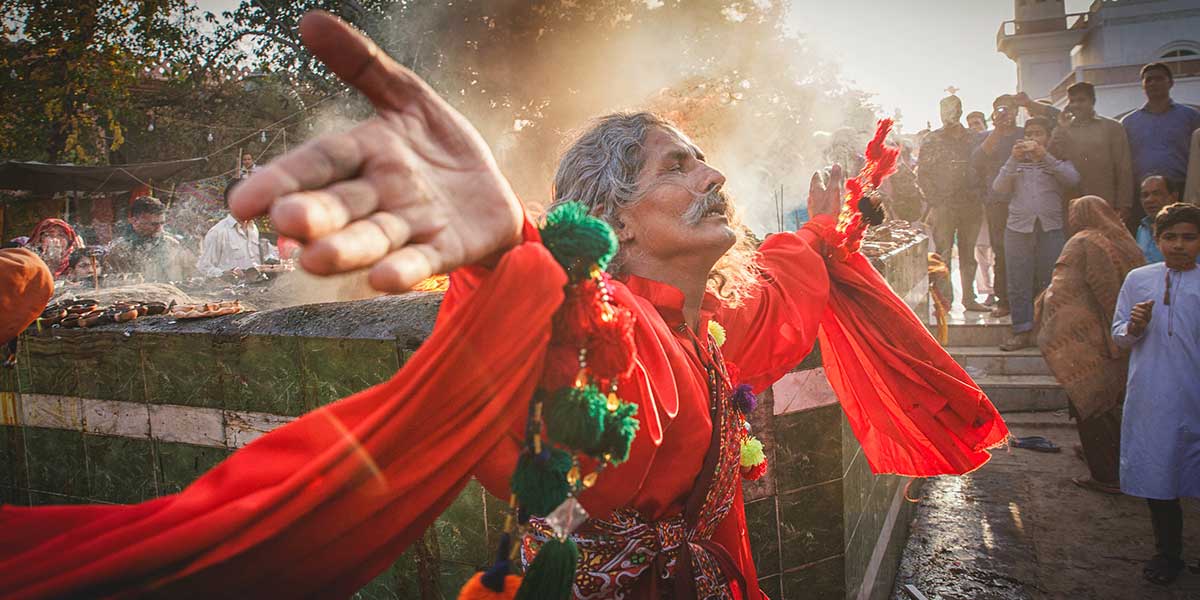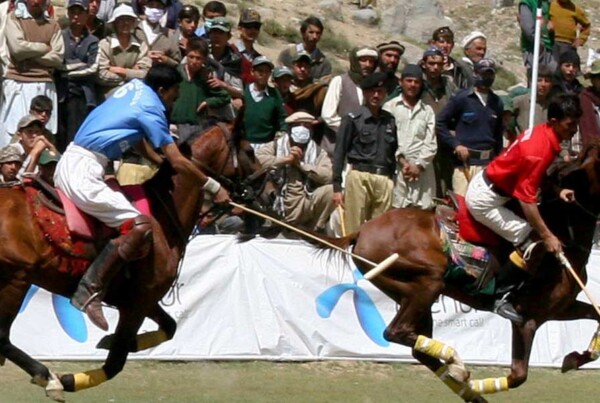Famous Sufi Shrines in Pakistan
Daata Darbar:
Located in the city of Lahore, Punjab, Pakistan[1] is one of the oldest Muslim shrines in South Asia. It houses the remains of a Sufi saint, Abul Hassan Ali Hajvery (more commonly known as Daata Ganj Baksh, or “the master (Daata) who bestows treasures gifted (Ganj Baksh) by Allah Almighty”). He is said to have lived on the site in the 11th century.
Shrine of Lal Shabaz Qalandar Sehwan Sharif:
is a Sufi shrine dedicated to the 13th-century Islamic mystic, Lal Shahbaz Qalandar. The shrine is located in Sehwan Sharif, in the Pakistani province of Sindh. The shrine is one of the most important in Pakistan and attracts up to one million visitors annually.
Shrine of Abdullah Shah Ghazi, Karachi:
The largest Sufi shrine in the largest city of Pakistan is that of the shrine of Abdullah Shah Ghazi. The shrine was built, almost 10 centuries ago, on a sandy hill on the coastal area of Karachi. It is believed that the saint protects the city from the cyclones.
Sheikh Rukn-ud-Din Abul Fateh:
The tomb of Shah Rukn-e-Alam, grandson of Shaikh Bahauddin Zakaria, which was built between 1320 and 1324, is an unmatched pre-Moghul masterpiece. The Mausoleum of Rukn-i-Alam could possibly be considered the glory of Multan. From any side the city is approached, the most prominent thing that can be seen from miles all around is a huge dome. This dome is the Shrine of Sheikh Rukn-ud-Din Abul Fath commonly known by the title Rukn-i-Alam (pillar of the world). The tomb is located on the southwest side of the Fort premises. This elegant building is an octagon, 51 feet 9 inches (15.77 m) in diameter internally, with walls 41 feet 4 inches (12.60 m) high and 13 feet 3 inches (4.04 m)thick, supported at the angles by sloping towers. Over this is a smaller octagon 25 feet 8 inches (7.82 m), on the exterior side, and 26 feet 10 inches (8.18 m) high, leaving a narrow passage all round the top of the lower story for the Moazzan, or public caller to prayers. The whole is surmounted by a hemispherical dome of 58 feet (18 m) external diameter. The total height of the building, including a plinth of 3 feet (0.91 m), is 100 feet (30 m). As it stands on the high ground, the total height above the road level is 150 feet. Besides its religious importance, the mausoleum is also of considerable archaeological value as its dome is reputed to be the second largest in the world, after ‘Gol Gumbad’ of Bijapur (India), which is the largest. The mausoleum is built entirely of red brick, bounded with beams of shisham wood, which have now turned black after so many centuries. The whole of the exterior is elaborately ornamented with glazed tile panels, string courses, and battlements. Colors used are dark blue, azure, and white, contrasted with the deep red of the finely polished bricks. The tomb was said to have been built by Ghias-ud-Din Tughlak for himself but was given up by his son Muhammad Tughlak in favor of Rukn-i-Alam, when he died in 1330.
Baha-ud-din Zakariya (1170-1267):
Standing at the north-eastern fringe of the ancient fort of Multan is the eternal abode of Al-Sheikh Al-Kabir Sheikh-ul-Islam Baha-ud-Din Abu Muhammad Zakaria Al-Qureshi Al-Asadi, one of the greatest saints of the Suhrawardiyya Silsila (Sufi order or tariqa and one of the most distinguished disciples of Sheikh Al-Shuyukh Shahab al-Din Suhrawardi. He was the founder of Suhrawardiyya Silsila in the Indian subcontinent. He was born in 1170. Sheikh Baha-ud-Din Zakariya, known as Bahawal Haq, was born at Kot Kehror (Karor Lal Esan), a town of Layyah District near Multan, around 1170. For 15 years, he traveled to different cities in order to preach Islam and eventually settled in Multan in 1222. He died in 1267. The Mausoleum is a square of 51 feet 9 inches (15.77 m), measured internally. Above this is an octagon, about half the height of the square, which is surmounted by a hemispherical dome. The Mausoleum was almost completely ruined during the siege of Multan by the British in 1848 but was soon afterward restored by Muslims.
Hazrat Muhammad Shah Yusaf Gardezi:
Within the city of Multan, Pakistan there is a shrine of Hazrat Muhammad Shah Yusaf Gardezi, commonly known as Shah Gardez, just inside the Bohar Gate. It is a rectangular domeless building decorated with glazed tiles, a work of considerable beauty. He came to Multan in 1088 and revitalized the then-dead city. Shah Yousaf Gardez converted many people to Islam and performed numerous miracles which can be found in history books. His descendants are known as Gardezis and are one of the few old noble families in the country.
Shams-i-Tabrīzī or Shams al-Din Mohammad:
(died in 1248) was a Persian Muslim, who is credited as the spiritual instructor of Mawlānā Jalāl ad-Dīn Muhammad Balkhi, also known as Rumi. He is referenced with great reverence in Rumi’s poetic collection, in particular, “Diwan-i Shams-i Tabrīzī” (The Works of Shams of Tabriz). Tradition holds that Shams taught Rumi in Konya for many years before retiring to the city Khoy (now in West Azerbaijan Province, Iran), where he died and his buried. That tomb has been nominated as a World Cultural Heritage Center by UNESCO. A saint by the name of Shams-i Tabrīzī is also buried at Multan in Pakistan and the tomb stone there clearly indicates it is the same Shams-i Tabrīzī, who was the spiritual mentor of Rumi of Konya, Turkey.
Syed Jalaluddin Surkh-Posh Bukhari:
1199–1291 CE) was a Sufi saint and missionary. He was a follower of Baha-ud-din Zakariya of the Suhrawardiyya order. Bukhari died on the 19th day of the 5th month (Jumada al-awwal) 690 AH (20 May 1291 CE) in Uch, Punjab aged 95.
Hazrat Syed Jalaluddin Husain Bukhari Makhdoom Jahanian Jahangasht:
Grandson of Syed Jalaluddin Surkh-Posh Bukhari, was a famous fourteenth-century Sufi saint from South Asia who is known to have belonged to fourteen different Sufi orders. He believed that every order was endowed with inherent spiritual greatness and therefore joined every order that then existed. He was a much-traveled person which earned him the title of Jahangasht (World Traveller).
Tomb of Bibi Jawindi:
Tomb of Bibi Jawindi is one of the five monuments in Uch Sharif, Punjab, Pakistan, that are on the tentative list of the UNESCO World Heritage Sites. Dating to the 15th century, the shrine was built in 1493 by an Iranian prince, Dilshad, for Bibi Jawindi, who was the great-granddaughter of Jahaniyan Jahangasht, a famous Sufi saint.





